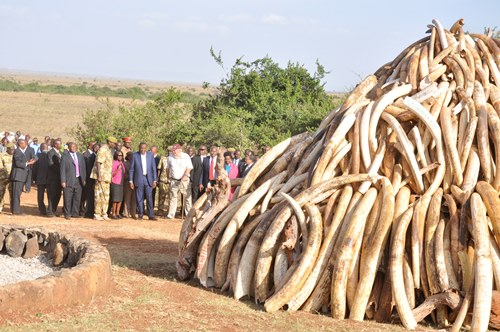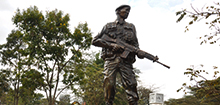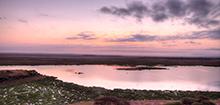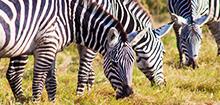
Date Published: 04 Mar, 2015
The government of Kenya will destroy all stockpiles of ivory in its custody.
President Uhuru Kenya, while speaking during celebrations to mark this year’s World Wildlife Day (March 3, 2015), said this will be done before the end of this year.
President Kenyatta who spoke at the Nairobi National park, the venue of the celebrations, torched 15 tonnes of ivory, saying this would send a clear message of his government’s abhorrence for illegal trade in game trophy, particularly of endangered species like elephant and rhino.
“In order to underline our determination to eradicate poaching, my Government shall burn the rest of the stockpile within this year. We hope the rest of the world will follow our action in the same manner”, said President Kenyatta.
The burning of the ivory in a heap next to a similar one torched by retired president Daniel Moi in 1989, was witnessed by First Lady Margaret Kenyatta, diplomats, eminent conservationists and top government officials, including the Cabinet Secretary for Environment, Water and Natural resources Prof. Judi Wakhungu and the Principal Secretary in the ministry, Dr. Richard Lesiyampe.
“The destruction of confiscated elephant ivory by itself does not put an end to the illegal trade. However, coupled with the seizure of ivory and prosecution of offenders, it sends a powerful message that Kenya does not accept and will not tolerate this illegal trade or the devastating impact it is having on the African elephant and on the livelihoods of rural communities”, stated president Kenyatta.
He noted that over the past three years, a number of countries including Belgium, Chad, China, Hong Kong, Czech Republic, Gabon, France, Philippines, and the USA have destroyed contraband elephant ivory and rhino horn, and commended them for their solidarity and commitment to discouraging trade in illegal wildlife products.
Kenya, the head of State added, was glad to see greater collaboration between various international institutions and agencies in combating illegal wildlife trade.
“I am proud of the work being done under the aegis of United Nations General Assembly Resolutions, CITES decisions”, he said. He singled out interventions of international agencies such as INTERPOL, UN Office of Drugs and Crime, the World Customs Organization and the regional Nairobi-based agency, Lusaka Agreement Task Force.
World Wildlife Day was proclaimed by the UN General Assembly to commemorate the adoption of the Convention on International Trade in Endangered Species of Wild Fauna and Flora (CITES). In its resolution, the General Assembly reaffirmed the intrinsic value of wildlife. It also underlined wildlife’s various contributions to human beings’ health and happiness.
The World Wildlife Day in Kenya was celebrated alongside the Africa Environment and Wangari Maathai Day, making it a three-way commemoration that represented the multilateral convergence and international consensus that has developed on the critical issue of environmental protection, and conservation of biodiversity.
The Ugandan High Commissioner to Kenya Ambassador Angeline Wapakhabulo on behalf of Diplomatic Corps said the Late Wangari Maathai’s efforts to protect and conserve environment transcended all spheres of humanity.
Other Speakers included AU Commissioner for Rural Economy Tumusiine Rhoda, Mette Løyche Wilkie Director, Division of Environmental Policy Implementation at the UNEP and Wanjira Mathai, daughter of the late Prof. Wangari Mathai.





